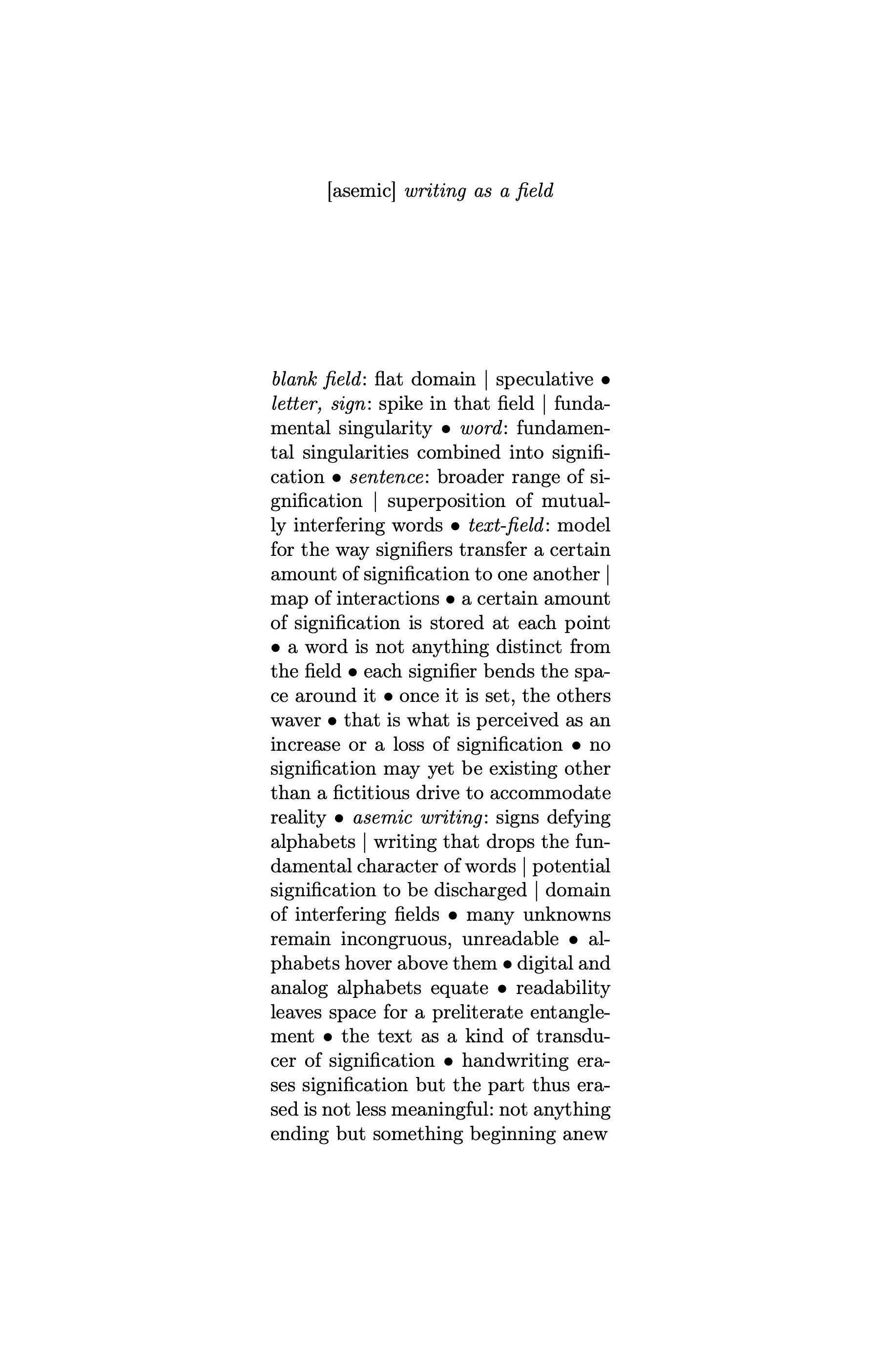

«There are things
we live among ’and to see them
is to know ourselves’»
Of being numerous (1968), George Oppen.
To most readers, textual experience is supposed to be a straight path through conventional signs, preferably within the frame of a native language. Nevertheless, no language is, in itself, truer or closer to “reality” than any other. Simultaneously writing in different languages, including those apparently obfuscated, results in an undepictable state of the text, hard to be conceived out of the conventional logic.
An inspiring interpretation of this phenomenon may be put forth referring to De Broglie’s duality.
Once the wave-like behaviour is observed, the particle-like one disappears: once är tyst (Swedish) → is silent (English), the silent artist disappears and someone else stands in his place in that silence. The classical idea that only what is expressed in a familiar language can be experienced, and vice versa, is hence uprooted or at least challenged.
Only for the sake of simplicity, English has been chosen as a language of reference, whenever possible.
The surface of the glacier, the most accessible part of it, forms a conglomeration of more or less conscious events and drives a relentless flux of languages. The overall text is far more significant than the strings of words or the expanses of signs it consists of, as much as the dynamics of dreaming preserves the traits of an individual experience, whilst within fixed structures. Any distinction between the languages, as well as any sense of objectivity of their constituents, is worked around.
Either behaviour (wave-like or particle-like) is, in the end, nothing intrinsic.
EIS works as a phenomenon which occurs because fundamental forces come into play. It is set out for the reader to experiment with the text, not to fulfil his expectations or to confront the obsessions of him who writes it.
The plot, in itself irrelevant, does not subsume a univocal experience. The characters are unstable and undergo constant metamorphoses, getting transmuted or annihilated. That involves the languages (German → English → Swedish → German → (…)) and the subjects (I → you → we → I → (…)) likewise.
Pronouns and nouns may be equated with elemental quanta of action, or with exchange carriers within the textual field. The things we live among are knots of a one and only undistinguishable field and to see them is to know that we too belong to it.
Federico Federici
EIS, with an essay by Peter Schwenger, LN 2022, ISBN 979-8831231823 (Paperback), 979-8831204735 (Hardcover) [Eng-Ger-Se] • buy: paperback: amazon.com | .it | .de | .se • hardcover: amazon.com | .it | .de | .se • read: archive | behance • listen: podcast • download: Peter Schwenger









